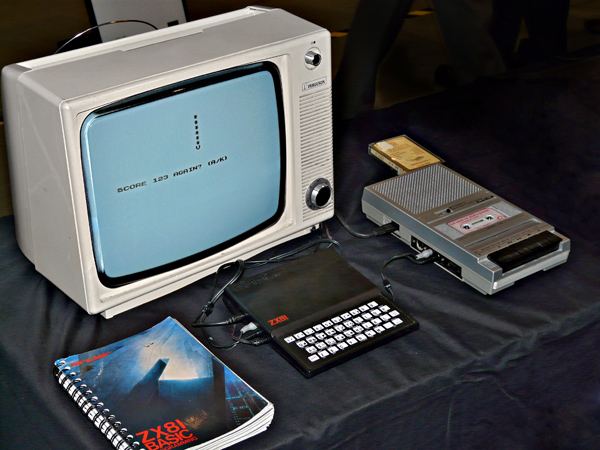My First Computer
At the risk of giving away my approximate age I would like to present my very first computer, the Sinclair ZX81; and what a beast it was with its Z80A 8-bit 3.5 MHz CPU, 1kB of on board RAM, 8kB of ROM containing a BASIC interpreter, monochrome UHF video output (supporting up to 64 x 48 pixels of graphics mode via 2x2 block characters) and the ubiquitous (at the time) external audio tape data storage. Ah, those were the days. How could one resist such awesomeness?
My Dad bought this for me around 1981/82 I think. This is where I first started to code, in BASIC, although my programs did nothing more sophisticated than print text to the screen. You can’t do much with 1kB of RAM so, in short order, we added a RAM expansion pack to bring us up to a whopping 16kB. You had to be careful not to jostle things though since the edge connector was a bit delicate and too much movement could crash the machine. That was a bit hard given the nature of the keyboard …
A Step Up
My next computer was a huge step up in power and sophistication: an Acorn BBC Micro model B. I’ll have you know that these were the mutt’s nuts back in the day.
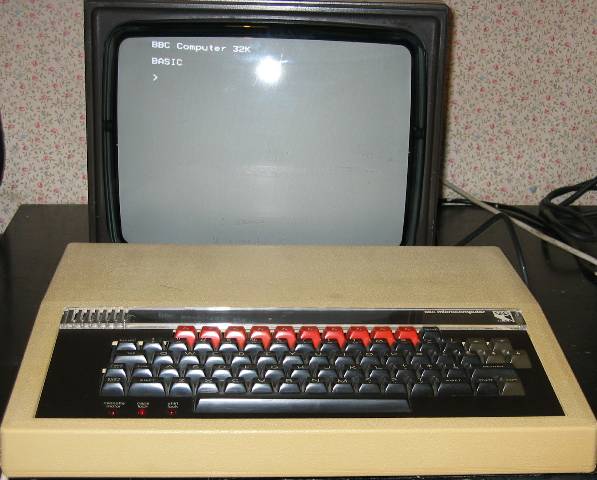
This was an expensive device as I recall; and I chose to get it, at age 13 or so, as opposed to go on a foreign exchange trip to the USA with school. And that, dear reader, tells you everything you need to know about the sort of child that I was. It had a 2 MHz 6502 CPU, 32kB of RAM and multiple graphics modes including colour (yes, that U is supposed to be there - this was a computer made at the behest of the BRITISH Broadcasting Corporation remember). I wrote more BASIC code here, mostly just drawing colored geometrical graphics on the screen as I recall. I also remember my parents buying me a magazine called INPUT which I collected and studied (somewhat) for a year. More significant though were the games, including such gems as Chuckie Egg and the seminal Elite. I never did make it to Elite as I recall, just Deadly. Mostly via trading narcotics and slaves … a great education for a young boy.
Chuckie Egg. Fiendishly addictive.

Elite! 3D wire-frame graphics with hidden line removal. Groundbreaking at the time.

School Stuff
I remember that in the school library at Redmoor High School (this would be Junior High for the Americans out there) we had a few computers. We had a BBC Micro of course (on which we would sneak in a few games of Elite over lunch) but we also had one of these bad boys (a Research Machines 380Z) that I don’t recall doing much with to be honest …
RM 380Z. I used to observe this thing from afar, in awe of its raw computing power. It had floppy disks!
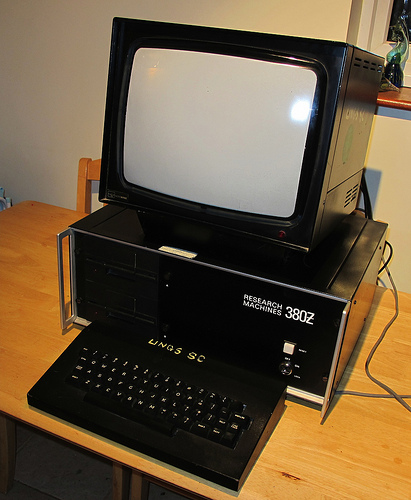
And I think we had a Commodore PET too. I had a cat at home myself.
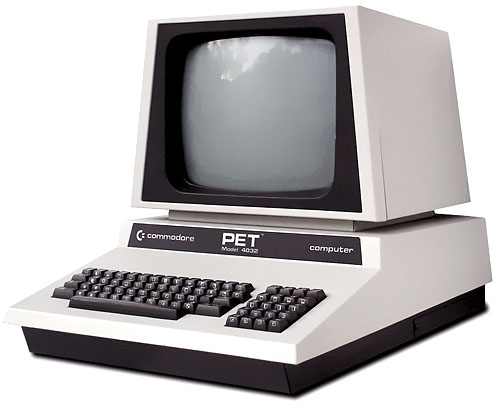
It was around this time that I started going to a computer club in the evenings at the school where my Mum used to work. I didn’t go for long though as I recall. I wanted to learn to program in “machine code” but the chap who was running the club didn’t really know much more than COBOL so I was a bit disappointed. I do remember playing with some Logo robots though; and spending an hour typing in a printed program listing from a magazine only to then hear a tinny computer speaker squeak out the theme from Close Encounters of the Third Kind. Oh the wonder of it all.
The Games Machine
Then I got one of these, an Amstrad CPC 464. This was primarily used to play games on, including as I recall a poor knock off of Konami’s Track and Field arcade game. This was the era when the arcade was the place where the “real” computer games lived and kids used to hang out for hours on end watching each other try to “beat the machine”. Oh, them were the days.
Alan Michael Sugar Trading FTW! Back then noone knew that he’d be on the telly so much in the future.
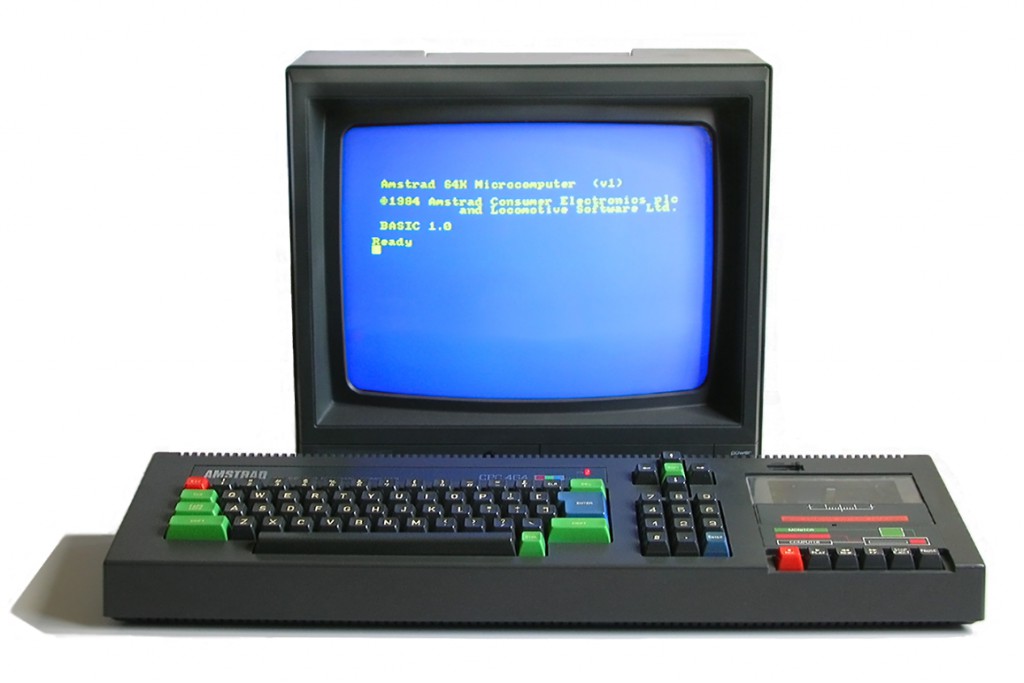
I had me one of these bad boys too. You could customize all the buttons and it had a rapid fire switch too. I recall hacking said Track and Field game by setting the left leg run button to ‘x’ and the right leg run button to ‘X’ in the game and then programming the joystick rapid-fire function to press ‘shift’. Ah, such youthful sport.
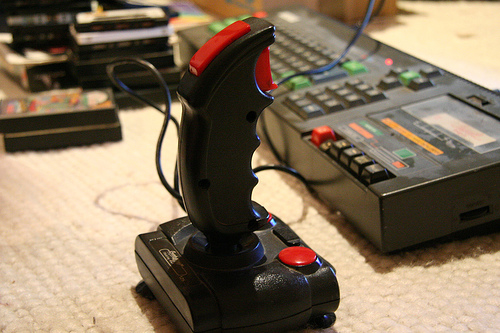
Then there were the magazines. One publishing company seemed to have a lock on the cool kids with versions of basically the same format of mag for each of the popular games computers of the time (the Sinclair Spectrum, Commodore 64 and Amstrad). Here’s the Amstrad one.
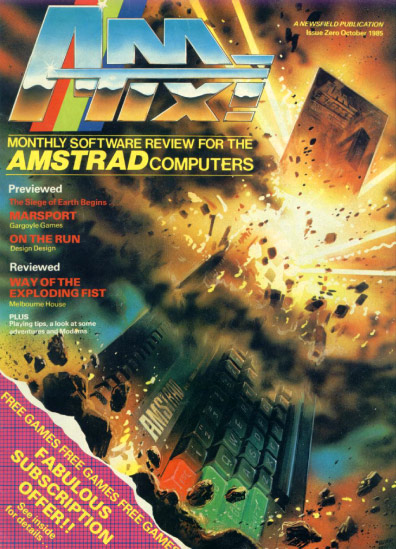
It was basically just full of games reviews.
Games
Some games that I spent way too long playing back in the day …
The Hobbit - Where’s Thorin?

Manic Miner - In the Halls of the Mountain King …

Way of the Exploding Fist - Don’t try to kick me in the head, I’ll just crouch and punch you in the balls if you do …
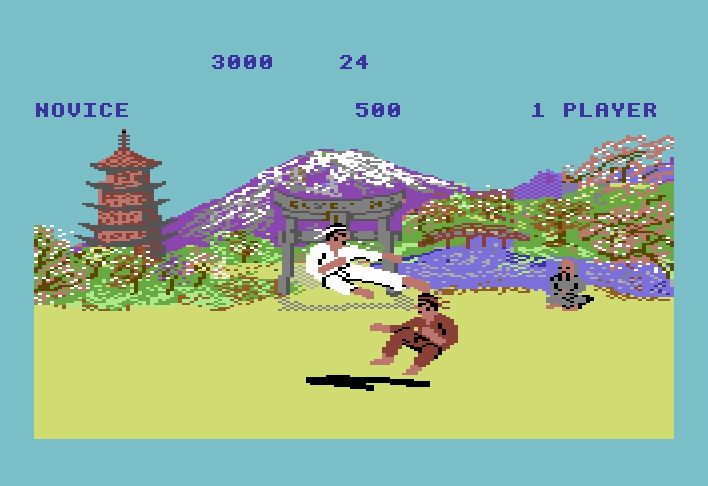
Knight Lore - Ultimate, Play the Game!

Time Out
After a few years I lost interest in computer games and became embroiled in the world of Dungeons and Dragons. This was a great chapter in my childhood and led to me making some very good friends. There was nothing quite like some old school role playing with your mates around your parents’ dinner table. There’s another blog post that I’ll write one day.
Getting Back on the Horse
I didn’t really return to computers until my first job after university. I did use some of the machines in the college computer lab to write up my CV for job applications during my final year but the main thing I recall from that is having to learn how to use MS World on a Mac and it taking me ages. So much for the intuitiveness of Macs. I was thrust into the world of MS DOS with Lotus 123 (which seemed so natural and powerful) and Word Perfect (which I hated, I used to write letters in Lotus 123 … honestly). I got myself a Dell PC for home, because my neighbor worked for Dell and could get me a deal. I think it was a 486 20MHz with a 40MB hard drive. It came with Windows 3.1 which seemed so cool at the time.
After about a year of work I admitted that I hated my first job (we all make mistakes) and I realized that I needed to do something more cerebral where my smarts would get me somewhere. I ended up getting a lucky break and finding a job with a very young but very successful American company focused on delivering financial data and analytics to the institutional investment community. Clearly computers were an integral part of that and so I started to learn more and more.
I never studied Computer Science at university. Everything I now know I learnt on the job based on my own motivations. That was over 20 years ago. It’s been a fun ride.
Some Final Perspective
This has been a nostalgic walk down memory lane but also a graphic reminder of the power of Moore’s Law in that today (March 2015 as of this writing), for US$35, you get get a fully integrated computer the size of a credit card that is orders of magnitude more powerful than any of these old things. That’s progress for you.
What sort of computers will we have, and take for granted, in another 20 years time? I guess we’ll see in due course.
